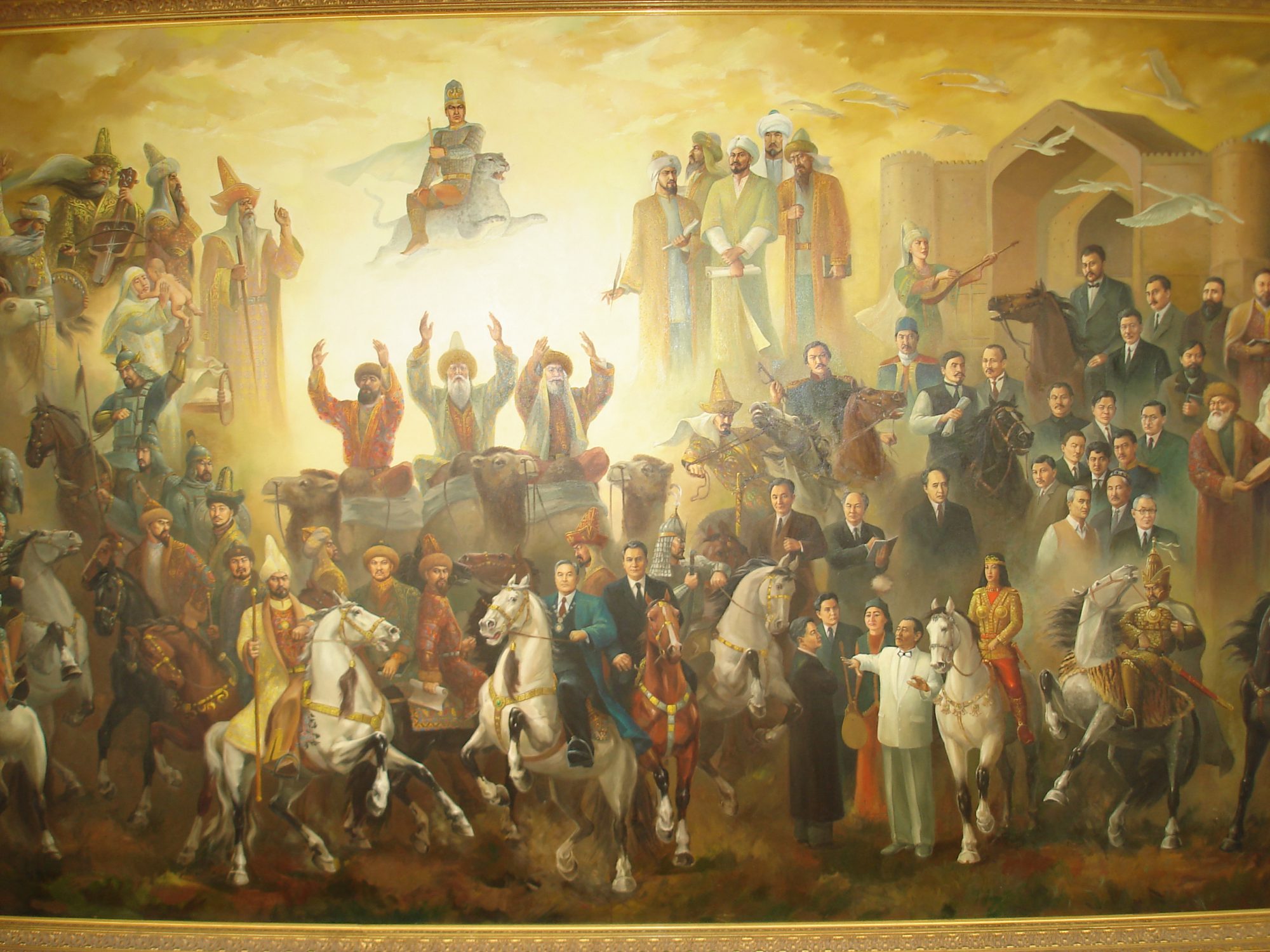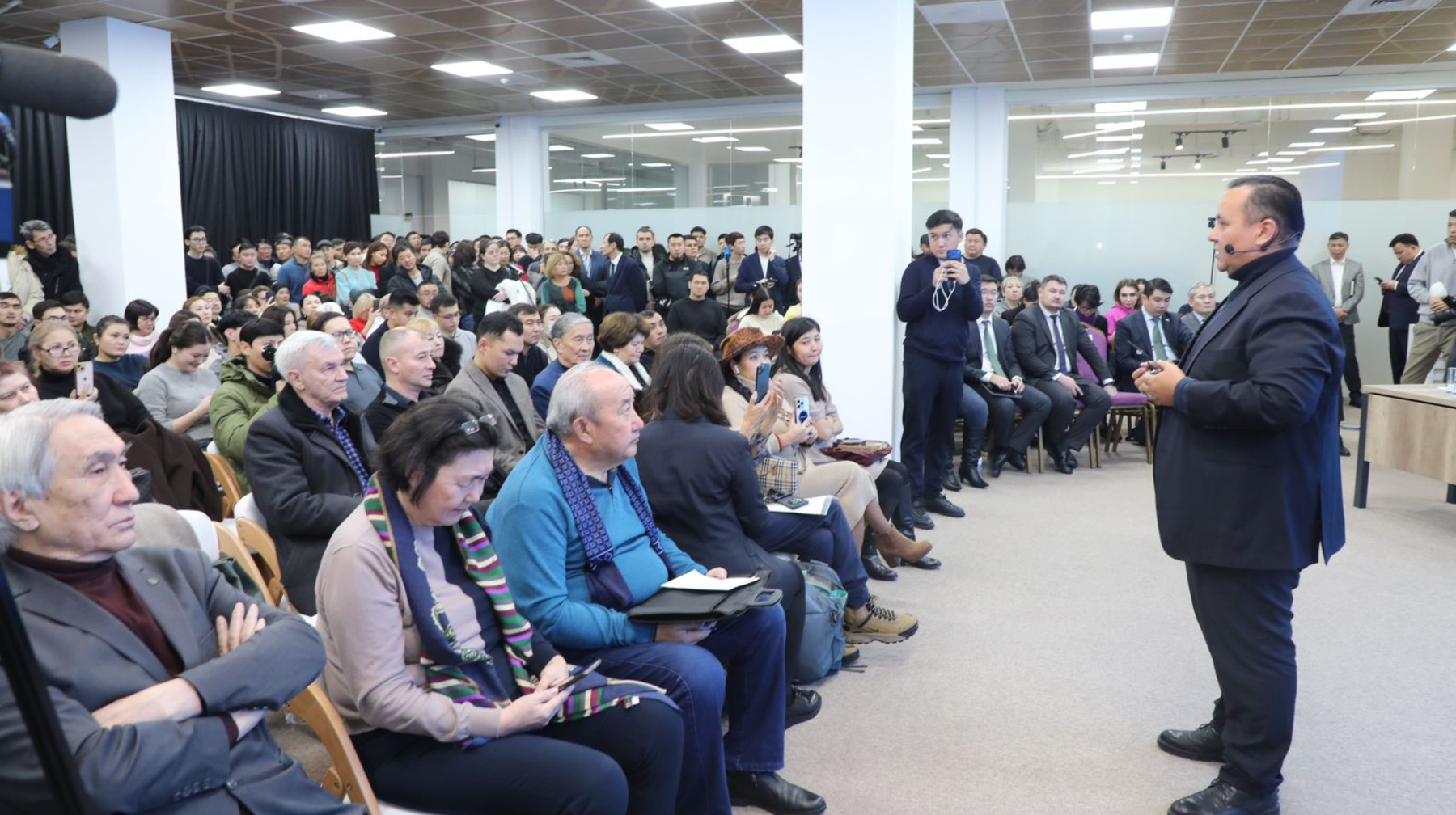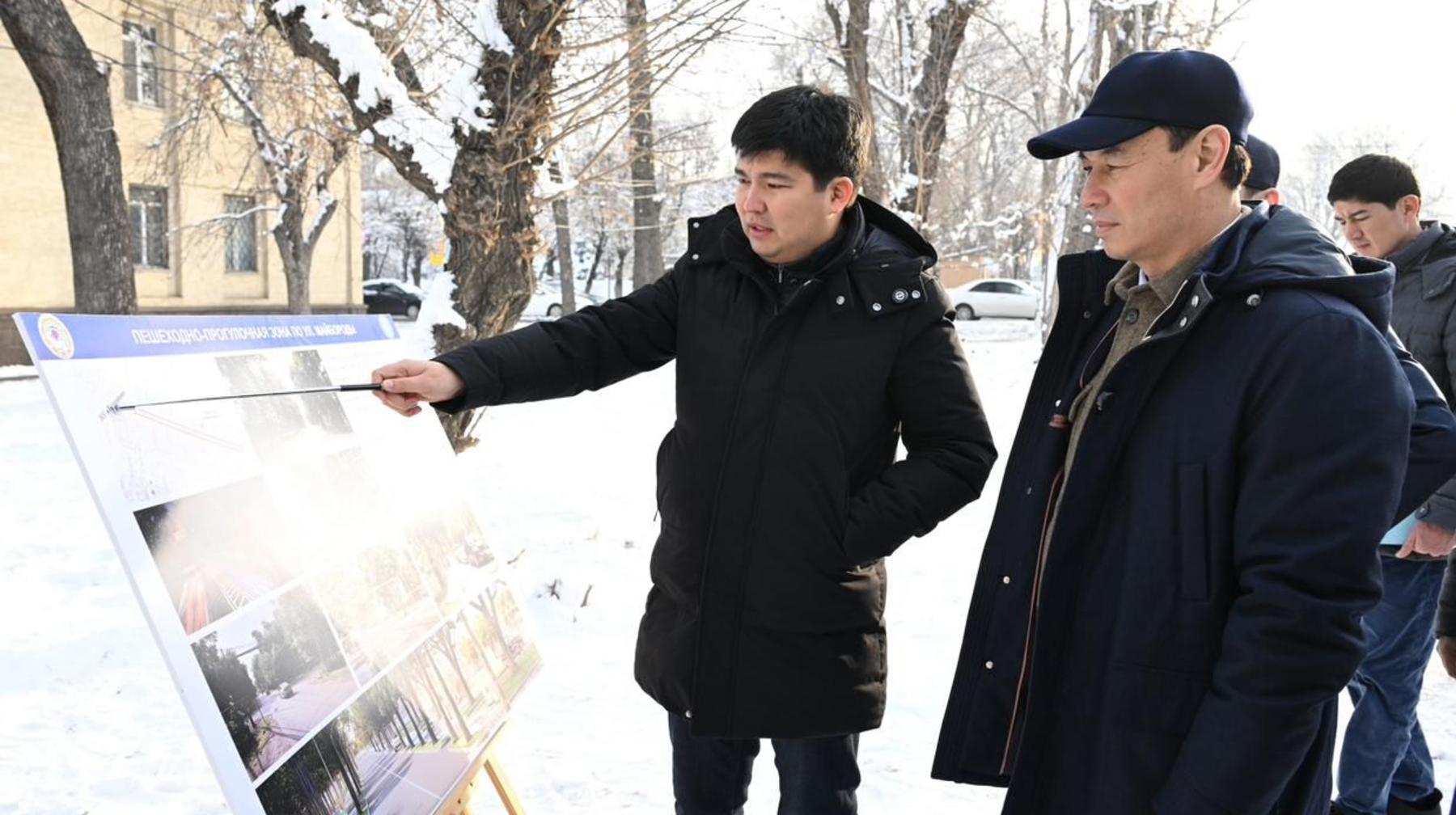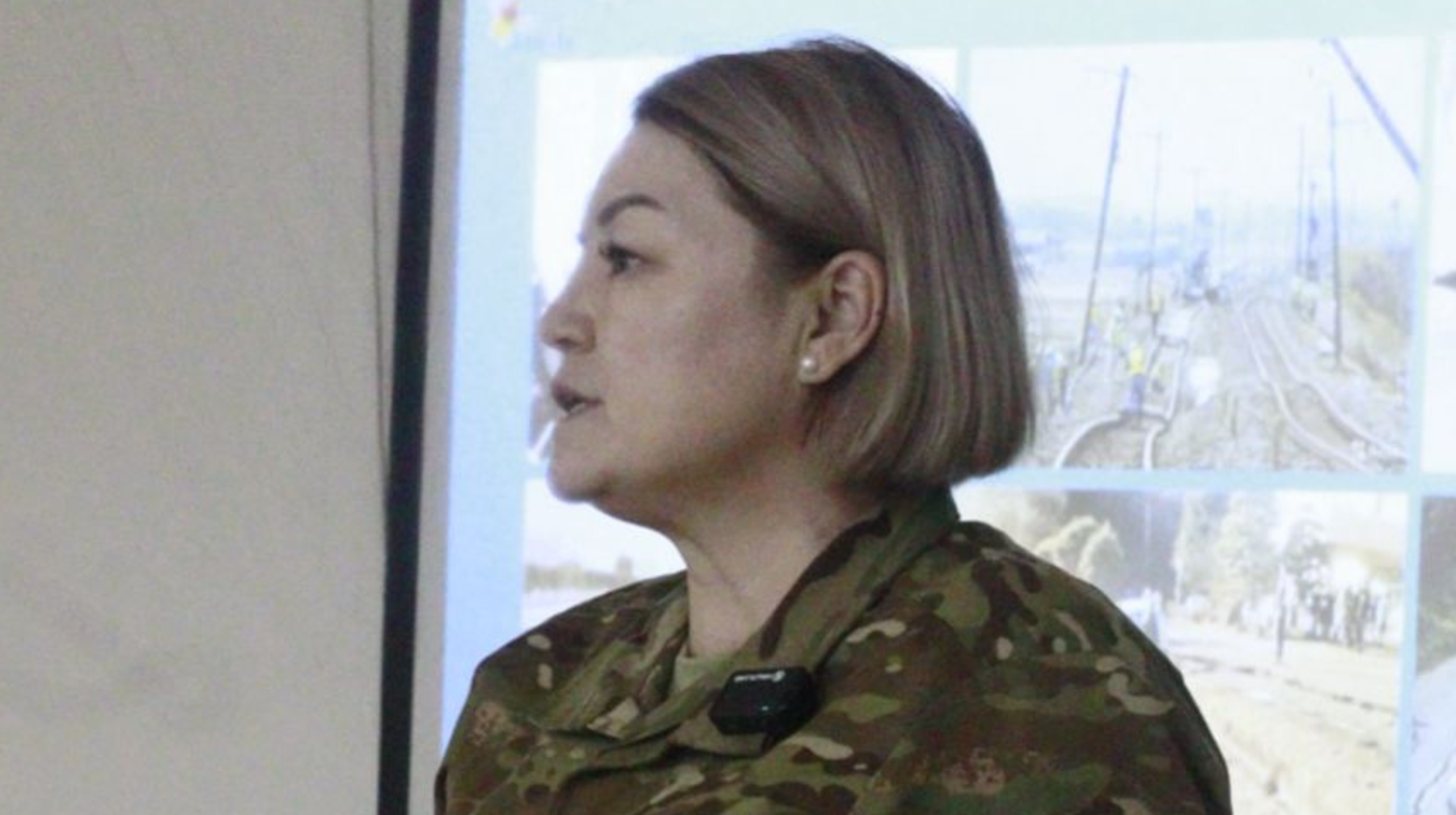Tomiris (6th century BC) was the famous queen of the Saka tribe, the Massagetae.
She is known from the writings of the "father of history" Herodotus. The Greek writer Tomyris wrote about his victory over Cyrus the Great, the founder of the Persian Empire. Ancient Roman authors such as Strabo, Polyenus, Cassiodorus and Jordan also wrote about Tomyris and his victory over Cyrus.
According to Herodotus, when Cyrus crossed the Arax River, he deliberately set a trap in the territory of the Massagetae. The Persians left the less fit part of the army in the camp, gave them the wine supply, and sent the main army back to the river. When the Massagetae defeat their opponents, they celebrate their victory, feast on food and wine, and fall asleep. The Persians took advantage of this opportunity and destroyed many places and captured many. Spargalis, the son of Queen Tomyris, was among those captured.
In the next battle, however, Tomiris defeats the Persian army. According to the legend, Tomiris put the head of King Cyrus in a bowl of blood and said, "Are you bloody?" "Drink until you are full." The life of Queen Tomiris became the basis for literary works and theatrical performances.
Al-Farabi (870-950) - the great medieval scientist-philosopher of the East, astronomer, mathematician, physician.
His full name is Abu Nasr Muhammad ibn Muhammad ibn Tarkhan ibn Uzlag al-Farabi al-Turki. He was born in the famous military family in the city of Farab (Otyrar) in Syrdarya.
Historians of science and culture have recognized the greatness and unique personality of Al-Farabi. Astronomy, logic, music theory, mathematics, sociology and ethics, medicine and psychology, philosophy and law are only half of his scientific interests. Al-Farabi left his native place when he was young and lived in different cities of the Muslim world - Bukhara, Khorran, Alexandria, Cairo, Damascus, Baghdad. Farabi spent many years of his life in Baghdad, which was the cultural and political center of Arab civilization. Here he supplemented his knowledge, read translations of ancient Greek authors, interacted with prominent scientists, and was able to take his place among them. It was here that he received the title "Second Teacher". The fact that he was called the "second" indicates the existence of the "first teacher", who was Aristotle.
Al-Farabi made his great contribution to the science of logic, originally invented by the great Greek thinker. The uniqueness of his philosophical views was felt immediately. And some of his thoughts were against the opinions of the public and were also related to religion. In fact, his thoughts were very unique and his thoughts left their mark.
The Kazakh National University (KazNU) in Almaty and the Pedagogical Institute in Shymkent are named after Al-Faribi.
Khoja Ahmet Yassaui (1103-1167) was a religious figure, poet, philosopher.
He was born in Ispijab (Sairam). Khoja Ahmet Yassaui devoted his whole life and efforts to uniting related peoples, establishing spiritual unity at the intersection of countless religious trends.
Khoja Ahmet Yassaui's works are widely distributed among local residents. He played the role not only of a religious figure, but also of a statesman. He addressed his people in his works, poems and treatises. Khoja Ahmet Yasawi urged the people to be patient with followers of other religions.
According to legend, Yassawi had to leave the daily life of this world to serve God. He went underground in the city of Iasi, near the mosque, and stayed there until the end of his life.
Khoja Ahmet Yassaui died in 1166-67 and was buried in the mausoleum dedicated to him as a saint in the city of Iasi. At the end of the 14th century, a large mausoleum was built in place of the small grave of Yassaui by order of Amir Temir, who spent a lot of effort to glorify Khoja Ahmet Yassaui. Later, it became a place of pilgrimage and worship for Muslims.
Kerei and Zhanibek Khan (15th century) - the first khans who founded the Kazakh Khanate.
In the beginning, the sultans of the dynasty of Abul Khayr, the descendants of Genghis Khan. In the 50s and 60s of the 15th century, Kerei and Zhanibek sultans, together with the tribes that supported them, migrated to the Western Zhetysu region, which was under the rule of the Mughal rulers from the Shagatai dynasty. At that time, Khan was Esen-Buga. This move was an important event in the emergence of a new state - the Kazakh Khanate, and the establishment of the ethnic group called Kazakhs.
After the death of Esen-Buga in 1462, the position of Kerei and Zhanibek began to strengthen as a result of the recognition of the authority of the local people of Zhetysu. All this led to the establishment of the Kazakh Khanate in 1465. Kerei Khan and Zhanibek Khan increased the possessions of the White Horde by adding Zhetysu lands to their accounts.
In 1468-69, Abulkhair Khan was killed during his campaign against the Kazakh Khanate. After that, Kerei Khan and Zhanibek Khan, who had strong military forces and were in full control of the Zhetysu region, started their struggle to subjugate East Desh Kypchaks. Kerei Khan and his supporters fought for the creation of a strong, independent state developed in political, cultural and economic relations. Kerei Khan died in this struggle. His name appears in historical records for the last time in connection with the event in the winter of 1473-74. Janibek Khan died in one of the battles in 1480. Nevertheless, the state they founded continued to grow stronger, lived for three centuries, and will be in the historical arena until the 18th century. (Descendants of Kerei and Janibek kept the title of khan until the middle of the 19th century).
Aiteke bi Baibekuly (1644-1700) - dance (judge) of Kishi Yuz.
At the same time, the dance played an important role in the khanate council when deciding state affairs related to domestic and foreign policy. He contributed to the unity of the Kazakh people, to the creation of a well-equipped army. He was one of the organizers of the struggle against the Dzungars. He was fluent in Arabic, Persian, Chagatai and Uzbek languages.
He was buried in the city of Nurata, Navai region, in the territory of modern Uzbekistan, and a small mausoleum was erected there.
Tole bi Alibekuly (1663-1756) - dance (judge) of the great face.
He was a very educated and eloquent person in his time. Many proverbs, judgments and words of wisdom are associated with Tole Bi. Tole bi is one of the creators of the "Seven Charters" set of laws, which legally established the social and legal norms of the Kazakh people.
Buried in Tashkent. A small mausoleum is built over his grave.
Abilkayr (1693-1748) - Kazybek bi Keldibekuly (1667-1764) - dance (judge) of the great face.
Kazybek was one of the influential members of the royal council during Tauke Khan's reign for a long time. Even after Tauke Khan's death, he was actively involved in the country's political life and was an adviser to the Khan on internal and foreign policy during the reign of Sameke, Abilmambet, and Abylai Khan. Information about the life of Kazybek Bi A. Levshin, Sh. Ualikhanov, Sh. Marjani, B. Adambaev, I. Preserved in the works of Torekulov et al.
He was buried in Khoja Ahmet Yassaui mausoleum in Turkestan, and a tombstone was placed on his head.
Abylai Khan (1711-1781) - Abylai Khan (1711-1781) Abulkhair (1693-1748), commander, diplomat, Khan of Kishi Yuz.
During the battle against the Dzungar army, Abulkhair proved to be a strong organizer and a talented commander who could repel the enemy. In a short time, he was able to rally all the strongest heroes of the three hundred to his side.
During the Dzungar-Kazakh war of 1723-1729, Abulkhair expanded the borders of the lands under his control and became an important figure in the military life of the Kazakh tribes. In 1726, he was elected commander-in-chief of the Kazakh army at the people's assembly in Ordabasy (South Kazakhstan region). Abulkhair Khan's leadership skills were demonstrated in the victorious battle with the Dzungars on the Bulanty River (1728) and at Anyarakai.
In 1726 and 1730, Abilkhair Khan petitioned the Russian government to subjugate the Kazakhs of Kishi Yuz. In this regard, in 1730, he sent an ambassador to the Russian Empress Anna Ioannovna in St. Petersburg.
In October 1731, Abulkhair swore allegiance to the Russian Empire. Abulkhair agreed to protect trade caravans, provide military aid to the Russian government, and pay taxes in hides and skins. In exchange, he asked to build a fortress along the Or River to protect Kazakh lands from neighboring invaders-the Bashkir, Kalmyk, and Zayik Cossacks. The goal of Abulkhair's reconstruction planning was thus to create a state system that would provide a high level of governance in a nomadic country and be able to withstand the military forces of strong neighbors.
Abylai Khan (1711-1781) Commander, diplomat, Khan of Orta Yuz.
His real name is Abilmansur. Tole dance influenced his education. In his youth, Abylai Sultan was one of the heroes of the war against the Dzungars. Later he became an important figure in the organization of the struggle for the preservation of the independence of the Kazakh state. He did not break relations with the rulers of China and Russia. In 1771 he was elected the Khan of Orta Yuz, Abylai became the Khan of the whole Kazakh horde not only in practice, but also due to his power and honor.
He was buried in Turkestan in the Khoja Ahmet Yassaui Mosque mausoleum. The name of Abylai Khan remained in the memory of the Kazakh people as a statesman, commander, diplomat.
Kenesary Kasymuly (Kasymov) (1802-1847) was a commander, the last Khan of the Kazakh Khanate.
In 1837-1847 he led the largest uprising of the Kazakh people against the colonial rule of the Russian Empire. In 1841, he was elected Khan of all Kazakhs at the People's Assembly. He was killed in a battle with the Kyrgyz army in Maytobe in the south of modern Kazakhstan.
Kenesary Kasymuli left his mark in history by preparing and uniting Kazakhs in difficult situations in the fight against strong enemies on the path of independence and freedom.
Kurmangazy Sagyrbayuly (1823-1896) percussionist, composer.
He was born in a poor family in Bokei Horde, Zhideli region (now West Kazakhstan region, Zhanakala district). He played tambourine since his childhood.
The Bokei Horde Kazakhs, led by Isatai Taimanuly and Makhambet Utemisuly, witnessed a popular uprising against the colonial power of the Russian Empire and Jangir Khan, who supported it. One of his first songs "Kishkentai" was dedicated to the participants of this uprising. In the songs "Alatau" and "Saryarka" the poet expresses the grief and sorrow of the people, their passionate love for their country, their desire for independence and freedom. Kurmangazy was acquainted with representatives of advanced Russian culture - philologists, historians, ethnographers - who collected data about Kazakh music, musicians and folk instruments.
About 60 of Kurmangazy's compositions have been preserved until today. The climax of his creativity is considered to be "Saryarka", which depicts the boundless space of the Kazakh steppe and gives a beautiful effect.
He was buried in the village of Altynzhar, Volodarsky district, Astrakhan region of modern Russia.
Shokan Ualikhanov (1835-1865) was an orientalist, historian, ethnographer, geographer, folklorist, translator, traveler.
Descendant of Genghis Khan, great-grandson of Abylai Khan. A graduate of the cadet corps in Omsk.
While studying to become a personnel officer in the Russian Imperial Army, he served as an aide to the Governor General of the West Siberian Province and performed intelligence tasks. He also conducted scientific research and traveled to the remote regions of Central Asia. During his last visit to Semipalatinsk, the great Russian writer F. Dostoevsky interacted with him.
He is considered one of the first authors of the famous Kyrgyz epic "Manas".
In 1858-1859 he traveled to Kashkaria, which gave him the title of the brave traveler. Sh. Ualikhanov made an important contribution to the scientific research of East Turkestan.
He left a great literary legacy. In his short life, he wrote valuable works on the history, geography, ethnography of the people of Central Asia and Kazakhstan, as well as many works on social and political issues. Despite his youth, Shokan was an established scientist with an encyclopedic mind, who found a unique way in the study of new sciences.
He died of tuberculosis at the age of 29.
Abai Kunanbayuly (1845-1904) poet, teacher, philosopher. Founder of Kazakh literature and Kazakh literary language.
The author of many songs and poems on lyrical, philosophical, domestic and historical themes, widely known among the Kazakh people. He translated the poems of A. Pushkin, M. Lermontov, I. Krylov, I. Goethe, J. Byron, A. Mickiewicz and others.
Abai's main contribution to the development of artistic prose is his "Black Words" (1890-1898). Abay's works have been translated into many languages of the world, including Russian, Chinese, English, French, German, Polish, and other languages.
In Kazakhstan, the name of Abay is given to the city, villages, streets, theaters, libraries and other objects. The Kazakh State Academic Theatre of Opera and Ballet, the Kazakh National Pedagogical University, the streets of the cities of Kazakhstan and some foreign cities, a peak of Alatau Island are named after Abai. Statues and monuments of Abai have been erected in dozens of cities and villages of Kazakhstan, as well as in Moscow, Beijing, Tashkent, Vitebsk, Budapest, Tehran and Istanbul.
Special celebrations dedicated to the 150th anniversary of Abay were held under the auspices of UNESCO.
Andrey Zenkov (1863-1936) was a famous architect and engineer.
He was born in Tobyl. His father was also an architect. In 1867 the family moved to Verny (now Almaty), where his father became one of the designers of the construction project. Organizer of earthquake-proof construction in Almaty. The buildings built by him, including the Cathedral of the Assumption, were not damaged during the strongest earthquake in 1911.
In the 1920s, A. Zenkov was involved in the restoration of destroyed buildings in the city economy - a bakery, anti-epidemic departments, hospitals and kindergartens. In 1925 he was appointed head of the department of construction supervision in the Council of People's Commissars of the Kazakh SSR. He participated in the creation of the first project of urban development in connection with the transfer of the capital of the republic from Kyzylorda to Almaty.
He was buried in the central cemetery of Almaty.
Alikhan Bukeikhanov (1866-1937) was a statesman and public figure, teacher, journalist, ethnographer.
He was born in Aktogai district, Karaganda region. His passion for education and hard work allowed him to study and successfully graduate from Omsk Technical School and St. Petersburg Imperial Forestry Institute. While studying in Russia, Alikhan had close contact with representatives of the Russian intelligentsia. Among his friends were such scientists as G. Potanin, F. Shcherbina, S. Shevtsov, V. Barthold and V. Radlov.
He took part in four scientific expeditions. Author of more than 50 scientific research works, monographs and essays, more than 1000 articles. Bukeikhanov is one of the authors and initiators of the "Karkaraly Petition", which presented political demands to the colonial authorities of the Russian Empire in 1905-1907, one of the organizers and leaders of the Omsk city and Akmola region committees of the Constitutional-Democratic Party of Russia (Cadet Party), Kazakh leader of the Cadet Party in Semipalatinsk and Karkaraly. The founder of the branch, a deputy of the Congress of local and urban personalities of the Russian Empire, which was held in Moscow in November 1905. Between January and April 1906 he spent 4 months in Pavlodar and Omsk prisons and was released due to the election of deputies.
In March 1917 he was appointed a commissar of the Provisional Government for the Torgai region and a member of the Provisional Government for the administration of the Turkestan region.
In 1920 he recognized the Soviet government. In 1922-1927 he was engaged in scientific, pedagogical, literary and journalistic activities in academic institutions of Moscow and Leningrad.
From October 1927 to July 1937 he was under house arrest in Moscow. On July 26, 1937 he was arrested and imprisoned in Butyrka prison. On September 27, 1937, he was sentenced to death on trumped-up charges of "creating and leading counterrevolutionary organizations in Moscow and Kazakhstan" and was shot the same day. He was buried in the Don cemetery in Moscow.
In July-July 1917 he organized the 1st and 2nd All-Kazakh Congresses in Orinbor and promoted the necessity and possibility of creating the national autonomy of the Kazakhs within the Russian state - the Alash Horde.
In 1917-1920 Alash participated in the creation of a military unit of the Horde army and negotiated with the governments of Russia (the Siberian Autonomy, the Ufa Directorate, the Ottoman government of Admiral Kolchak).
Ivan Panfilov (1893-1941) army chief, major general, Hero of the Soviet Union.
He was born on January 1, 1893 in the city of Petrovsk (Saratov region). Participant of the First World War. Served in the Red Army since 1918. On July 14, 1941, he was appointed the commander of the 316th Infantry Division. In a short period of time, the division was formed and sent to the front. This division consisted of residents of Almaty and Frunze (now Bishkek, Kyrgyzstan). I. Panfilov himself died on November 18 from injuries sustained by mine fragments during the defense of Moscow.
According to the decree of the Presidium of the Supreme Council of the USSR dated April 12, 1942, I.P. Panfilov was awarded the title of Hero of the Soviet Union (posthumously). Awarded with orders of Lenin, Red Banner, medals. He was buried in Moscow.
His name is given to many divisions and schools of Central Asia. In Moscow, streets and avenues are named after Batyr. In Almaty, the central park is also named after Panfilov heroes.
Manshuk Mametova (1922-1943) machine gunner, Hero of the Soviet Union.
Her real name is Mansia Mamytova. On August 13, 1942, he voluntarily went to the front. He participated in the battles as part of the 100th Infantry Brigade and the 21st Infantry Division. Senior sergeant, commander of the machine gun. On October 15, 1943, in the fierce and decisive battle for the city of Nevel, Manshuk, who was the only machine gunner, fired from a machine gun until his last breath, killed 70 opponents and died heroically from severe wounds. For this feat, Manshuk was awarded the title of Hero of the Soviet Union.
Nevel, Almaty, Ural, etc. There are streets and dozens of schools named after Manshuk in cities. Monuments were erected in his birthplace and in the city of Nevel, and a memorial museum-house was opened. M. A feature film "Song about Manshuk" was dedicated to Mametova (screenplay written by A. Mikhalkov-Konchalovsky, directed by M. Begalin).
Aliya Moldagulova (1925-1944) sniper, Hero of the Soviet Union.
Sniper of the 2nd Baltic Front, 22nd Army, 54th Separate Rifle Brigade, Corporal. He killed 78 soldiers and officers of the enemy. On January 14, 1944, he was seriously injured and died in the Novosokolniki district in the north of the Pskov region. Despite his hand being injured by a shrapnel, he fights with German soldiers and is seriously wounded twice. The second injury leads to death. On June 4, 1944, A. Moldagulova was posthumously awarded the title of Hero of the Soviet Union. At the same time, he was awarded the Order of Lenin.
Mukhtar Auezov (1897-1961) writer, playwright, scientist-philologist.
He was born in Semey region, in a family related to the great Kazakh poet Abai. He studied at the Semipalatinsk Teachers' Seminary and later graduated from the Leningrad State University. In his youth, he wrote the theatrical play "Enlik-Kebek" on the theme of eternal love without a story, which was caused by inter-clan enmity.
In the 1920s, he was actively involved in the political life of Kazakhstan, became a member of the Communist Party, and was closely associated with supporters of the former "Alash Orda" national government. He was subjected to political persecution in the early 1930s for this. He was actively engaged in scientific and pedagogical activities and wrote new works.
Between 1942 and 1954, he wrote a 4-volume novel "Abai Zholy" dedicated to the history of the Kazakh people and the life path of the great poet. The epic novel was popular and soon recognized as the most important achievement of Kazakh literature. For this work, in 1959, he was awarded the highest literary award of the USSR - the Lenin Prize.
He is the author of several novels, more than 20 plays, many stories and stories.
Kanysh Satbaev (1899-1964) scientist-geologist, organizer of science and economy.
Founder of the school of metallurgy of the Soviet Union and Kazakhstan. He was born on April 12, 1899 in the Bayanaul district of the present Pavlodar region.
After successfully graduating from the Tomsk Institute of Technology in 1926, he headed the geology department of the "Atbastustimet" trust. During this activity, the Kazakh SSR conducted the first stationary works on the planning of mineral reserves in Zhezkazgan and Ulytau districts.
K. Thanks to Satbaev's work, in 1937 it was possible to call Zhezkazgan the largest copper mine in the world in terms of copper reserves. Zhezkazgan mining and metallurgical plant was built here.
In 1941, K. Satbayev became the director of the Institute of Geological Sciences within the Kazakh branch of the Academy of Sciences of the USSR, and a year later became the chairman of the Kazakh branch of the Academy of Sciences of the USSR. During these years, he focused on the design and construction of Kazakhstan's Magnitka, Balkash, Atasu mining plants. In June 1946, K. Satbaev was elected the first president of the Kazakhstan Academy of Sciences. In October of the same year, he was elected an academician of the Academy of Sciences of the USSR. He personally managed the comprehensive study of natural resources of the Mangistau Peninsula, the study of new places of coal, oil, gas, and ferrous metallurgy deposits, and supported the construction of the Irtys-Karagandy canal. He knew Kazakh history, culture, ethnography, music and folklore very well. His archeological researches in the territory of central Kazakhstan and works written on literature and pedagogy are also known.
In 1958, he was awarded the Lenin Prize, the highest scientific award of the USSR, for the work of developing the methodological basis and creating the estimated metallurgical maps of central Kazakhstan with a group of Kazakhstani scientists. He was buried in Almaty.











